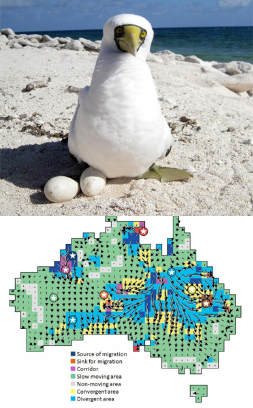New maps show species threats and pressure worldwide
 An international team has developed a series of maps showing how fast and in which direction local climates have shifted, to illuminate species at risk worldwide.
An international team has developed a series of maps showing how fast and in which direction local climates have shifted, to illuminate species at risk worldwide.
Australian researcher with CSIRO contributed to the large-scale effort, which has now been published in the journal Nature.
The global study has also helped create an easier way of looking at climatic changes and predicting their effects on biodiversity.
“Across Australia, species are already experiencing warmer temperatures. In terrestrial habitats, species have started to seek relief by moving to higher elevations, or further south. However, some species of animals and plants cannot move large distances, and some not at all,” ecological geographer with the project Kristen Williams said.
“The maps show us how fast and in which direction temperatures are shifting, and where climate migrants following them may hit barriers such as coastlines. Our work shows that climate migration is far more complex than a simple shift towards the poles,” she said.
The study included analysis of decades worth of sea surface and land temperature data spanning 1960 to 2009, and also investigated two future scenarios for marine environments. It modelled what may happen in a ‘business as usual’ scenario and the effects of a 1.75°C temperature increase.
The maps show some species have been driven south from monsoonal northern Australia in the hope of cooler habitats, but now may perish in that environment.
“In the oceans, warming waters and a strengthening of the East Australian Current have mobilised the Long-spined Sea Urchin, previously only found as far south as southern NSW, to invade the eastern Tasmania coast. This has resulted in the decline of giant kelp forests with knock-on effects for commercially-fished rock lobsters,” CSIRO's Dr Elvira Poloczanska said.
Dr Anthony Richardson from CSIRO and the University of Queensland says the maps cannot tell the future, but should be used for better-informed projections.
“Biological factors such as a species’ capacity to adapt and disperse need to be taken into consideration,” Professor Richardson said.
“But in an unprecedented period of climate change, economic development and fast growing demand on an already pressured planet, we need to act fast to make sure as much of the world’s living resources survive that change.”
The research has been published in the journal Nature, and is accessible here.
The maps are available as Google Earth files, here.








 Print
Print